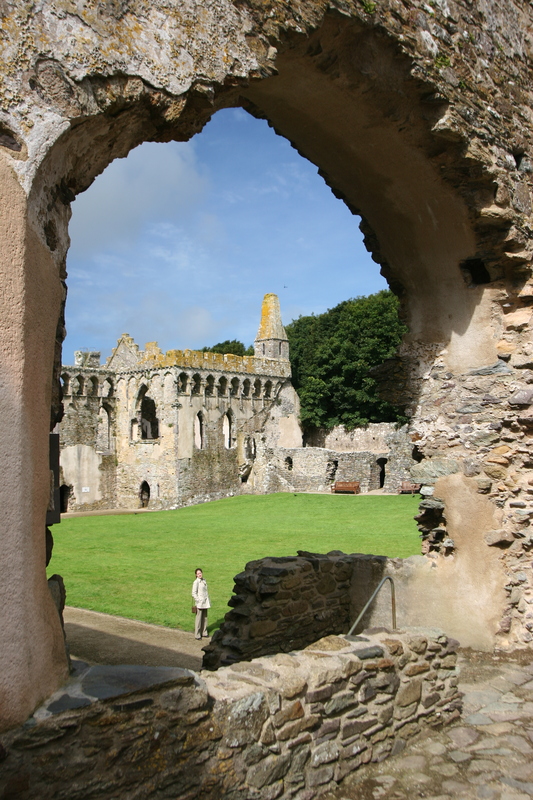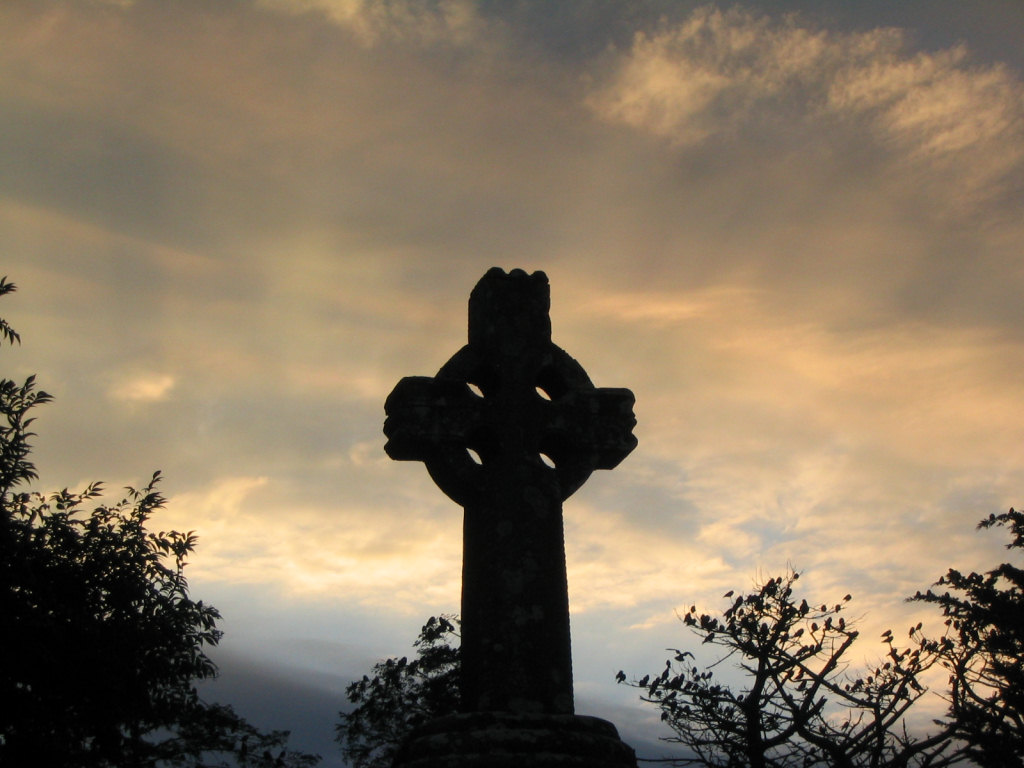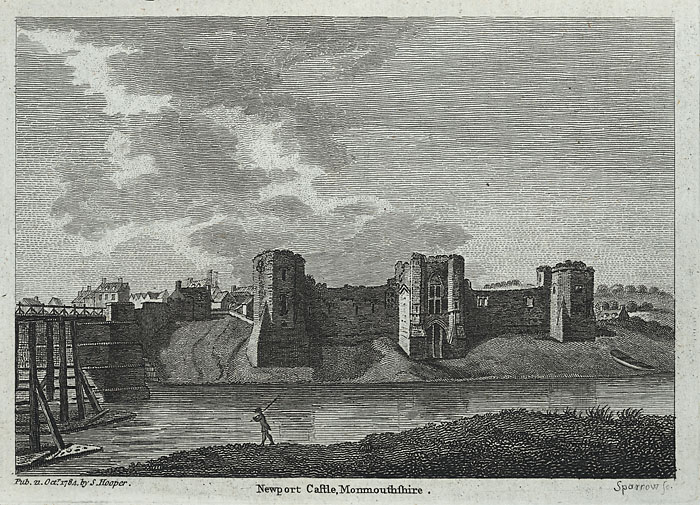|
Synod Of Victory
The Synod of Victory (Synod of the Grove of Victory, Synod of Caerleon) was a church council held in Caerleon, Wales, around AD 569. While some sources say it was a continuation of the Synod of Brefi to condemn the heresy of Pelagianism, others, such as Baring-Gould say it was in regards to penitential canons. It was officiated by Saint David Saint David ( cy, Dewi Sant; la, Davidus; ) was a Welsh bishop of Mynyw (now St Davids) during the 6th century. He is the patron saint of Wales. David was a native of Wales, and tradition has preserved a relatively large amount of detail ab .... The synod ratified the canons and decrees of Brefi as well as a code of rules which he had drawn up for the regulation of the British Church, a copy of which remained in the Cathedral of S. David's until it was lost in an incursion of pirates.Baring-Gould, Sabine. "Saint David", ''Lives of the Saints'' References 569 6th century in Wales Celtic Christianity History of Christianity ... [...More Info...] [...Related Items...] OR: [Wikipedia] [Google] [Baidu] |
Caerleon
Caerleon (; cy, Caerllion) is a town and community in Newport, Wales. Situated on the River Usk, it lies northeast of Newport city centre, and southeast of Cwmbran. Caerleon is of archaeological importance, being the site of a notable Roman legionary fortress, Isca Augusta, and an Iron Age hillfort. Close to the remains of Isca Augusta are the National Roman Legion Museum and the Roman Baths Museum. The town also has strong historical and literary associations: Geoffrey of Monmouth elevated the significance of Caerleon as a major centre of British history in his ''Historia Regum Britanniae'' (c. 1136), and Alfred Lord Tennyson wrote '' Idylls of the King'' (1859–1885) while staying in Caerleon. History Pre-Roman history The area around Caerleon is of considerable archaeological interest with a number of important Neolithic sites. By the Iron age, the area was home to the powerful Silures tribe and appears to have been the centre of a wealthy trading network, both m ... [...More Info...] [...Related Items...] OR: [Wikipedia] [Google] [Baidu] |
Annales Cambriae
The (Latin for ''Annals of Wales'') is the title given to a complex of Latin chronicles compiled or derived from diverse sources at St David's in Dyfed, Wales. The earliest is a 12th-century presumed copy of a mid-10th-century original; later editions were compiled in the 13th century. Despite the name, the record not only events in Wales, but also events in Ireland, Cornwall, England, Scotland and sometimes further afield, though the focus of the events recorded especially in the later two-thirds of the text is Wales. Sources The principal versions of appear in four manuscripts: * A: London, British Library, Harley MS 3859, folios 190r–193r. * B: London (Kew), National Archives, MS. E.164/1 (K.R. Misc. Books, Series I) pp. 2–26 * C: London, British Library, MS. Cotton Domitian A.i, folios 138r–155r * D: Exeter, Cathedral Library, MS. 3514, pp. 523–28, the . * E: ''ibid.'', pp. 507–19, the . *A is written in a hand of about 1100–1130 AD, and inser ... [...More Info...] [...Related Items...] OR: [Wikipedia] [Google] [Baidu] |
Pelagianism
Pelagianism is a Christian theological position that holds that the original sin did not taint human nature and that humans by divine grace have free will to achieve human perfection. Pelagius ( – AD), an ascetic and philosopher from the British Isles, taught that God could not command believers to do the impossible, and therefore it must be possible to satisfy all divine commandments. He also taught that it was unjust to punish one person for the sins of another; therefore, infants are born blameless. Pelagius accepted no excuse for sinful behaviour and taught that all Christians, regardless of their station in life, should live unimpeachable, sinless lives. To a large degree, "Pelagianism" was defined by its opponent Augustine, and exact definitions remain elusive. Although Pelagianism had considerable support in the contemporary Christian world, especially among the Roman elite and monks, it was attacked by Augustine and his supporters, who had opposing views on grac ... [...More Info...] [...Related Items...] OR: [Wikipedia] [Google] [Baidu] |
Sabine Baring-Gould
Sabine Baring-Gould ( ; 28 January 1834 – 2 January 1924) of Lew Trenchard in Devon, England, was an Anglican priest, hagiographer, antiquarian, novelist, folk song collector and eclectic scholar. His bibliography consists of more than 1,240 publications, though this list continues to grow. His family home, the manor house of Lew Trenchard, near Okehampton, Devon, has been preserved as he had it rebuilt and is now a hotel. He is remembered particularly as a writer of hymns, the best-known being " Onward, Christian Soldiers", "Sing Lullaby", and "Now the Day Is Over". He also translated the carol " Gabriel's Message" from the Basque language to English. Origins Sabine Baring-Gould was born in the parish of St Sidwell, Exeter, on 28 January 1834. He was the eldest son and heir of Edward Baring-Gould (1804–1872), lord of the manor of Lew Trenchard, a Justice of the Peace and Deputy Lieutenant of Devon, formerly a lieutenant in the Madras Light Cavalry (resigned 1830) ... [...More Info...] [...Related Items...] OR: [Wikipedia] [Google] [Baidu] |
Saint David
Saint David ( cy, Dewi Sant; la, Davidus; ) was a Welsh bishop of Mynyw (now St Davids) during the 6th century. He is the patron saint of Wales. David was a native of Wales, and tradition has preserved a relatively large amount of detail about his life. His birth date, however, is uncertain: suggestions range from 462 to 512. He is traditionally believed to be the son of Saint Non and the grandson of Ceredig ap Cunedda, king of Ceredigion. The Welsh annals placed his death 569 years after the birth of Christ, but Phillimore's dating revised this to 601. Hagiography Many of the traditional tales about David are found in the ''Buchedd Dewi'' ("Life of David"), a hagiography written by Rhygyfarch in the late 11th century. Rhygyfarch claimed it was based on documents found in the cathedral archives. Modern historians are sceptical of some of its claims: one of Rhygyfarch's aims was to establish some independence for the Welsh church, which had refused the Roman rite unti ... [...More Info...] [...Related Items...] OR: [Wikipedia] [Google] [Baidu] |
Synod Of Brefi
The Synod of Brefi was a church council held at Llanddewi Brefi in Ceredigion, Wales, around 545. The synod was apparently called in order to condemn the heretical teachings of Pelagius. It was an important milestone in the rise of Saint David. It was Paulinus who advised Saint Dubricius, the senior bishop there, to invite David, a minor abbot, to the synod. David kept aloof from all temporal concerns and was initially reluctant to attend. St David's Church, Llanddewi Brefi is the site associated with St David's best known miracle, when, according to tradition, the ground rose up under his feet as he addressed the large crowd so that he could be heard better. According to legend, David's words were so eloquent that Dubricius retired in David's favour. One of his first duties was to consecrate Saint Deiniol as Bishop of Bangor. It is also said that the synod was called while Saint Cadoc, Abbot of Llancarfan, was away in Brittany. In disgust, he refused to return for many ye ... [...More Info...] [...Related Items...] OR: [Wikipedia] [Google] [Baidu] |
St Davids Cathedral
St Davids Cathedral ( cy, Eglwys Gadeiriol Tyddewi) is situated in St DavidsBritain's smallest city in the county of Pembrokeshire, near the most westerly point of Wales. Early history The monastic community was founded by Saint David, Abbot of Menevia, who died in 589. Between 645 and 1097, the community was attacked many times by raiders, including the Vikings; however it was of such note as both a religious and an intellectual centre that King Alfred summoned help from the monastic community at St Davids in rebuilding the intellectual life of the Kingdom of Wessex. Many of the bishops were murdered by raiders and marauders, including Bishop Moregenau in 999 and Bishop Abraham in 1080. The stone that marked his grave, known as the "Abraham Stone", is intricately carved with early Celtic symbols and is now on permanent display within the Cathedral Exhibition at Porth-y-Tŵr. In 1081, William the Conqueror visited St Davids to pray, and thus recognised it as a holy and respec ... [...More Info...] [...Related Items...] OR: [Wikipedia] [Google] [Baidu] |
6th Century In Wales
6 (six) is the natural number following 5 and preceding 7. It is a composite number and the smallest perfect number. In mathematics Six is the smallest positive integer which is neither a square number nor a prime number; it is the second smallest composite number, behind 4; its proper divisors are , and . Since 6 equals the sum of its proper divisors, it is a perfect number; 6 is the smallest of the perfect numbers. It is also the smallest Granville number, or \mathcal-perfect number. As a perfect number: *6 is related to the Mersenne prime 3, since . (The next perfect number is 28.) *6 is the only even perfect number that is not the sum of successive odd cubes. *6 is the root of the 6-aliquot tree, and is itself the aliquot sum of only one other number; the square number, . Six is the only number that is both the sum and the product of three consecutive positive numbers. Unrelated to 6's being a perfect number, a Golomb ruler of length 6 is a "perfect ruler". Six is a co ... [...More Info...] [...Related Items...] OR: [Wikipedia] [Google] [Baidu] |
Celtic Christianity
Celtic Christianity ( kw, Kristoneth; cy, Cristnogaeth; gd, Crìosdaidheachd; gv, Credjue Creestee/Creestiaght; ga, Críostaíocht/Críostúlacht; br, Kristeniezh; gl, Cristianismo celta) is a form of Christianity that was common, or held to be common, across the Celtic-speaking world during the Early Middle Ages. Some writers have described a distinct Celtic Church uniting the Celtic peoples and distinguishing them from adherents of the Roman Church, while others classify Celtic Christianity as a set of distinctive practices occurring in those areas. Varying scholars reject the former notion, but note that there were certain traditions and practices present in both the Irish and British churches that were not seen in the wider Christian world. Such practices include: a distinctive system for determining the dating of Easter, a style of monastic tonsure, a unique system of penance, and the popularity of going into "exile for Christ". Additionally, there were other pr ... [...More Info...] [...Related Items...] OR: [Wikipedia] [Google] [Baidu] |
History Of Christianity In Wales
History (derived ) is the systematic study and the documentation of the human activity. The time period of event before the invention of writing systems is considered prehistory. "History" is an umbrella term comprising past events as well as the memory, discovery, collection, organization, presentation, and interpretation of these events. Historians seek knowledge of the past using historical sources such as written documents, oral accounts, art and material artifacts, and ecological markers. History is not complete and still has debatable mysteries. History is also an academic discipline which uses narrative to describe, examine, question, and analyze past events, and investigate their patterns of cause and effect. Historians often debate which narrative best explains an event, as well as the significance of different causes and effects. Historians also debate the nature of history as an end in itself, as well as its usefulness to give perspective on the problems of the p ... [...More Info...] [...Related Items...] OR: [Wikipedia] [Google] [Baidu] |
6th-century Church Councils
The 6th century is the period from 501 through 600 in line with the Julian calendar. In the West, the century marks the end of Classical Antiquity and the beginning of the Middle Ages. The collapse of the Western Roman Empire late in the previous century left Europe fractured into many small Germanic kingdoms competing fiercely for land and wealth. From the upheaval the Franks rose to prominence and carved out a sizeable domain covering much of modern France and Germany. Meanwhile, the surviving Eastern Roman Empire began to expand under Emperor Justinian, who recaptured North Africa from the Vandals and attempted fully to recover Italy as well, in the hope of reinstating Roman control over the lands once ruled by the Western Roman Empire. In its second Golden Age, the Sassanid Empire reached the peak of its power under Khosrau I in the 6th century.Roberts, J: "History of the World.". Penguin, 1994. The classical Gupta Empire of Northern India, largely overrun by the Huna (people), ... [...More Info...] [...Related Items...] OR: [Wikipedia] [Google] [Baidu] |
History Of Newport, Wales
Newport ( cy, Casnewydd; ) is a city and Local government in Wales#Principal areas, county borough in Wales, situated on the River Usk close to its confluence with the Severn Estuary, northeast of Cardiff. With a population of 145,700 at the 2011 census, Newport is the third-largest authority with City status in the United Kingdom, city status in Wales, and seventh List of Welsh principal areas, most populous overall. Newport became a unitary authority in 1996 and forms part of the Cardiff-Newport metropolitan area. Newport was the site of the last large-scale armed insurrection in Great Britain, the Newport Rising of 1839. Newport has been a port since medieval times when the first Newport Castle was built by the Normans. The town outgrew the earlier Roman Britain, Roman town of Caerleon, immediately upstream and now part of the borough. Newport gained its first Municipal charter, charter in 1314. It grew significantly in the 19th century when its port became the focus of Coa ... [...More Info...] [...Related Items...] OR: [Wikipedia] [Google] [Baidu] |





.jpg)

